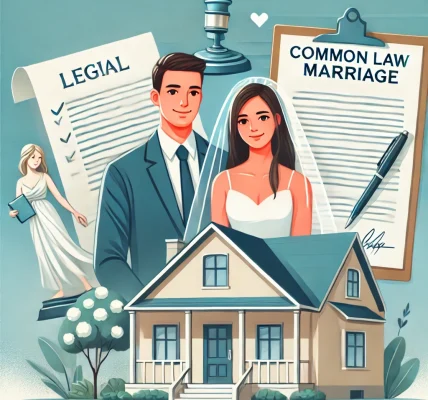Divorce is a significant legal process that involves dissolving a marriage and addressing critical issues such as property division, child custody, and financial support. Navigating this process can be complex, but understanding the steps involved can help make it smoother and more manageable. This guide provides a comprehensive, legally safe, and SEO-friendly step-by-step approach to filing for divorce.
Step 1: Understand Your State’s Divorce Laws
Divorce laws vary by state and country, so it’s essential to familiarize yourself with the legal requirements in your jurisdiction. Key factors to consider include:
- Residency requirements (how long you must live in the state before filing)
- Grounds for divorce (fault vs. no-fault divorce)
- Property division laws (community property vs. equitable distribution)
- Child custody and support guidelines
Consulting a family law attorney or researching state laws can help you determine the best approach for your situation.
Step 2: Determine the Type of Divorce
Before filing, you need to decide what type of divorce is suitable for your circumstances:
- Uncontested Divorce: Both spouses agree on all terms, making the process faster and less expensive.
- Contested Divorce: One or both spouses disagree on key issues, requiring court intervention.
- Mediated Divorce: A neutral third party helps the couple reach an agreement outside of court.
- Collaborative Divorce: Each spouse has a lawyer, and both parties work together to settle matters without litigation.
- Default Divorce: If one spouse does not respond to the divorce petition, the court may grant a divorce by default.
Step 3: Gather Necessary Documents
Divorce involves legal paperwork, and having the required documents ready can expedite the process. Common documents include:
- Marriage certificate
- Prenuptial or postnuptial agreements (if applicable)
- Financial records (income statements, tax returns, bank statements, debts, assets)
- Property ownership documents (real estate, vehicles, businesses)
- Child custody and support agreements (if applicable)
Step 4: File the Divorce Petition
The divorce process officially begins when one spouse (the petitioner) files a divorce petition (also known as a Complaint for Divorce) with the appropriate family court. The petition typically includes:
- Basic information about both spouses
- Grounds for divorce (e.g., irreconcilable differences, adultery, abandonment)
- Requests for property division, child custody, spousal support, etc.
After filing, the court assigns a case number, and the petitioner must serve the other spouse (the respondent) with divorce papers.
Step 5: Serve Divorce Papers to Your Spouse
The respondent must receive official notice of the divorce. This is done through service of process, which can be completed in several ways:
- Personal Service: A professional process server or sheriff delivers the documents.
- Certified Mail: Divorce papers are sent through certified mail with a return receipt.
- Publication: If the spouse’s whereabouts are unknown, notice may be published in a newspaper (as allowed by law).
Once served, the respondent typically has 20–30 days to respond.
Step 6: Responding to the Divorce Petition
If you are the responding spouse, you can:
- Agree with the petition and proceed with an uncontested divorce.
- Disagree with certain terms and file a response, leading to a contested divorce.
- Ignore the petition, which may result in a default judgment against you.
Step 7: Negotiate Settlement Terms
To avoid prolonged court battles, spouses should attempt to negotiate terms related to:
- Property and asset division
- Child custody and visitation schedules
- Spousal and child support payments
- Debt division
Settlements can be reached through direct negotiation, mediation, or with the assistance of attorneys.
Step 8: Attend Mediation or Court Hearings (If Required)
If both spouses cannot agree, the court may require mediation to resolve disputes. If mediation fails, a judge will hold hearings to make legal decisions on contested matters.
Step 9: Obtain the Final Divorce Decree
Once all issues are resolved, the court will issue a divorce decree (final judgment), officially ending the marriage. This document includes:
- Terms of the divorce settlement
- Child custody and support arrangements
- Property division agreements
Both parties must adhere to the terms outlined in the decree.
Step 10: Final Steps After Divorce
After the divorce is finalized, ensure that all legal and financial matters are in order:
- Update personal records (social security, driver’s license, passport, etc.)
- Change beneficiaries on insurance policies and retirement accounts
- Close or update joint financial accounts
- Follow custody and support agreements as outlined by the court
Conclusion
Filing for divorce involves legal complexities, but understanding the step-by-step process can help you navigate it more smoothly. Whether your divorce is uncontested or requires court intervention, being informed about your rights and obligations can lead to a fair and legally sound resolution. Consulting a qualified family law attorney can further ensure you follow the correct legal procedures while protecting your interests.




